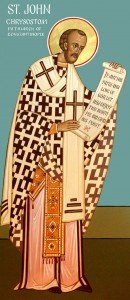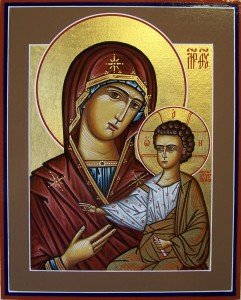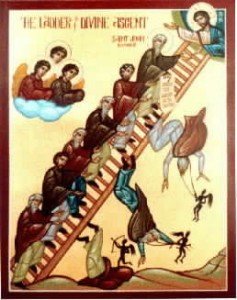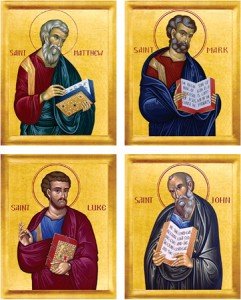 I have been sharing some of St. John’s thoughts about the event on Mt. Tabor during which Jesus transfigured Himself before Peter, James and John. St. John then even reflects on the meaning of the “Bright Cloud” that is said to have appeared on Tabor. Like Origen before him, Chrysostom regards the appearance of the Cloud as a direct reply to Peter’s proposal to build three tabernacles. The Cloud appears, according to John, as a divine tabernacle, that is a tabernacle which is not made by the hands of men.
I have been sharing some of St. John’s thoughts about the event on Mt. Tabor during which Jesus transfigured Himself before Peter, James and John. St. John then even reflects on the meaning of the “Bright Cloud” that is said to have appeared on Tabor. Like Origen before him, Chrysostom regards the appearance of the Cloud as a direct reply to Peter’s proposal to build three tabernacles. The Cloud appears, according to John, as a divine tabernacle, that is a tabernacle which is not made by the hands of men.
The purpose of this Cloud, the brightness of which he contrasts with the thick darkness of the Cloud of Sinai (recall the story of the giving of the Tables of the Law to Moses on Sinai), was to instruct rather than to threaten or frighten. The bright Cloud marks the beginning of a further stage in the revelation on Tabor. In fact, St. John sees it as the prelude to the Voice of the Father. However, it is interesting that the Cloud itself is not identified exclusively with the Father, nor for that matter with any Person of the Holy Trinity in particular. It is simply regarded as a manifestation of God. Therefore, the Voice of the Father emanates from the Cloud in order to assure the disciples of its divine provenance. And so a subtle distinction can be discerned here between the Cloud, which denotes the presence of God, and the Voice from the Cloud, the purpose of which is to bear witness to and confirm the divine Sonship of the Savior.
However, there is in Chrysostom no explicit statement regarding the nature of the Cloud beyond what has already been said, namely, that the Cloud is simply a manifestation of God. But there is a small passage in John’s homily on the Transfiguration, which offers, perhaps, a more positive indication as to what he believes the bright Cloud to be. He says:
There is probably nothing more blessed that the apostles, and especially the three, who even in the Cloud were made worthy to be under the same roof with the Master.
The general point being made here can be no greater blessing for us than to be with Christ. Being with Christ, therefore, is the blessing that the apostles received, and it is also the one thing that all Christians should strive and hope for. But there is also a strong emphasis here on the three disciples, who received the extra special distinction of being with Christ even in the Cloud.
Understand this: the message is always more than the manifest content.








